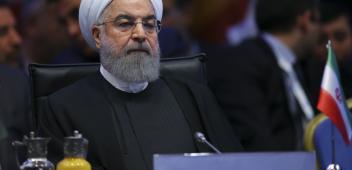Attack shows US can’t take its eyes off Iran
Originally published in The Australian.

This week’s drone attack on Iranian infrastructure in Isfahan was light on results but heavy on symbolism. The use of drones over Iranian airspace is hardly new. Two US drones crashed in Iran in 2005, in 2011 a US Sentinel aircraft was brought down over northeastern Iran and in 2019 a US Global Hawk was shot down over the Straits of Hormuz. But these were part of long-standing intelligence-gathering missions that the US conducts in the region.
What is new is the use of drones to attack a target inside Iran. Until now, operations conducted against targets in Iran had been carried out clandestinely. Mysterious fires in industrial and research facilities, targeted assassinations or cyber attacks against Iran’s nuclear establishments have normally been the order of the day. Little is publicly know about the nature of the target in Isfahan against which the drone was launched, although presumably it was of sufficient importance to justify the attack. The mode of attack may also have been designed to send a message to Tehran about its role in the proliferation of drone technology. It has sold drones to Russia, which Moscow subsequently used against civilian targets in Ukraine. Drone attacks have also been carried out by Iranian-supported groups against the United Arab Emirates and Saudi Arabia.
Hundreds of kilometres to the west, around the same time as the attack in Isfahan, drones also attacked a convoy of vehicles allegedly transporting Iranian weapons to Syria via Iraq. These drone strikes against Iranian targets were conducted against an interesting regional backdrop – the return of the hawkish Benjamin Netanyahu as Prime Minister in Israel; a visit of CIA director William Burns to Israel and the conduct of Exercise Juniper Oak, the largest combined US-Israeli air force exercise ever held.
For its part, Tehran faces multiple economic and security challenges, with the current extended series of popular protests placing further pressure on the theocratic government. Joe Biden has provided public moral support to the protesters from its inception, something Barack Obama failed to do in response to 2009 protests. Little else can be practically done of course, given the nature of the Iranian state that rewards loyalty to the centre.
The Trump administration’s unilateral withdrawal from the Iranian nuclear deal and its subsequent ill-advised and poorly thought-out policy of maximum pressure against Tehran certainly set the conditions for the current period of confrontation with Iran. The Biden administration’s policy of trying to re-set relations with Iran and counter weapons proliferation through re-committing Washington and Tehran to the deal is moribund, with Washington’s frustration with Iranian intransigence palpable. There are increasing signs that Washington’s patience with Tehran is running out and the Biden administration is putting more stick in their “carrot and stick” approach.
During its tenure the Biden administration has been less invested in directly addressing the security challenges of the Middle East, preferring to focus on the strategic competition with China, and forced to deal with the security challenge posed by Russia’s invasion of Ukraine. But the Middle East has a way of grabbing the attention of US presidents whether they like it or not. Be it increasing conflict between Israel and the Palestinians, rapprochement between Syria’s Assad regime and some of its neighbours or the need to prop up the failing Lebanese state, one thing is certain – the drone attack on Iran is almost certainly not the last time that we will see actions by or against Iran impose themselves on the Biden administration’s higher priority foreign policy goals.


